
My previous guide for Homebridge involved the use of Task Scheduler and the .spk package. Today I’m offering a recommended and excellent alternative for installing the latest Homebridge version via Portainer. Homebridge is a lightweight NodeJS server you can run on your home network that emulates the iOS HomeKit API. Homebridge allows you to integrate with smart home devices that do not support the HomeKit protocol. After installing Homebridge, it remains running and connected to your network, ready to service requests from Siri. In this step by step guide I will show you how to install Homebridge on your Synology NAS using Docker & Portainer.
STEP 1
Please Support My work by Making a Donation.
STEP 2
Install Portainer using my step by step guide. If you already have Portainer installed on your Synology NAS, skip this STEP. Attention: Make sure you have installed the latest Portainer version.
STEP 3
Go to File Station and open the docker folder. Inside the docker folder, create one new folder and name it homebridge. Follow the instructions in the image below.
Note: Be careful to enter only lowercase, not uppercase letters.
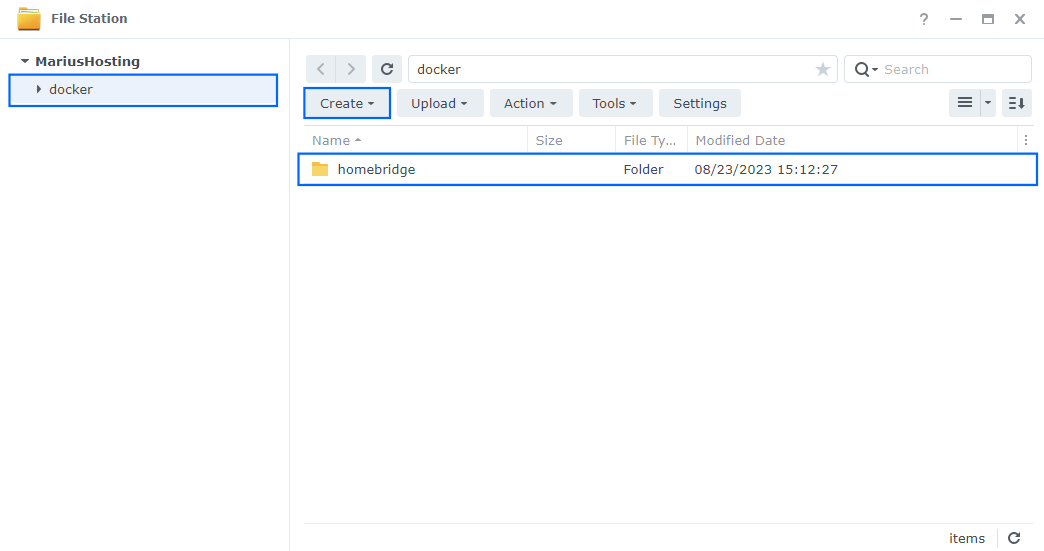
STEP 4
Log into Portainer using your username and password. On the left sidebar in Portainer, click on Home then Live connect. Follow the instructions in the image below.

On the left sidebar in Portainer, click on Stacks then + Add stack. Follow the instructions in the image below.

STEP 5
In the Name field type in homebridge. Follow the instructions in the image below.
services:
homebridge:
image: homebridge/homebridge
container_name: Homebridge
healthcheck:
test: curl -f http://localhost:8581/ || exit 1
mem_limit: 8g
cpu_shares: 768
security_opt:
- no-new-privileges:true
restart: on-failure:5
volumes:
- /volume1/docker/homebridge:/homebridge:rw
environment:
- DSM_HOSTNAME=MariusHosting
- PACKAGES=ffmpeg
network_mode: host
Note: Before you paste the code above in the Web editor area below, change the DSM_HOSTNAME value with the name of your NAS. To find your NAS name go Control Panel / Network / General tab / Server name.
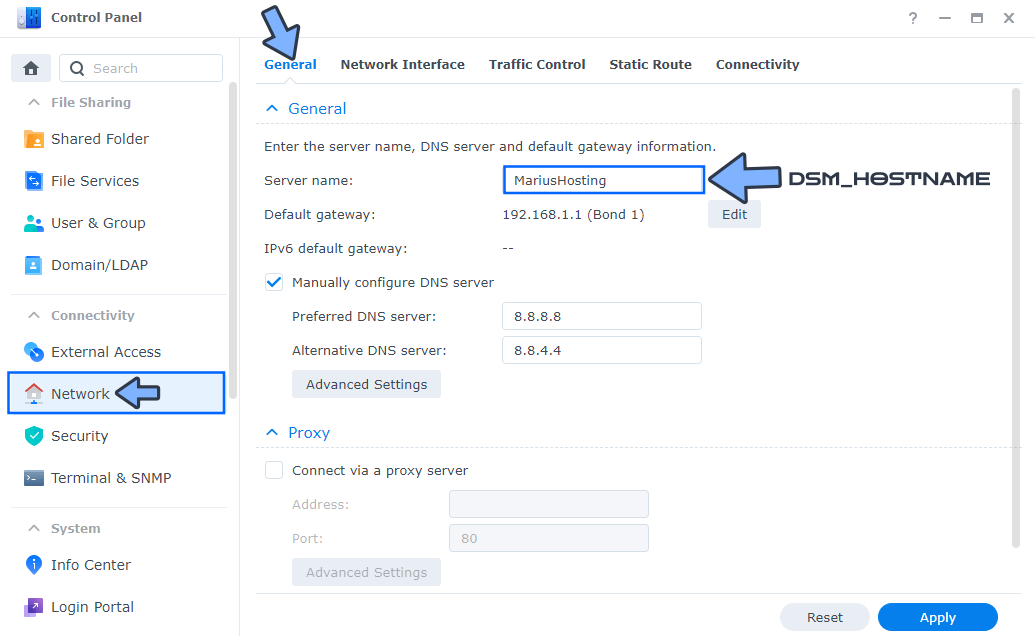
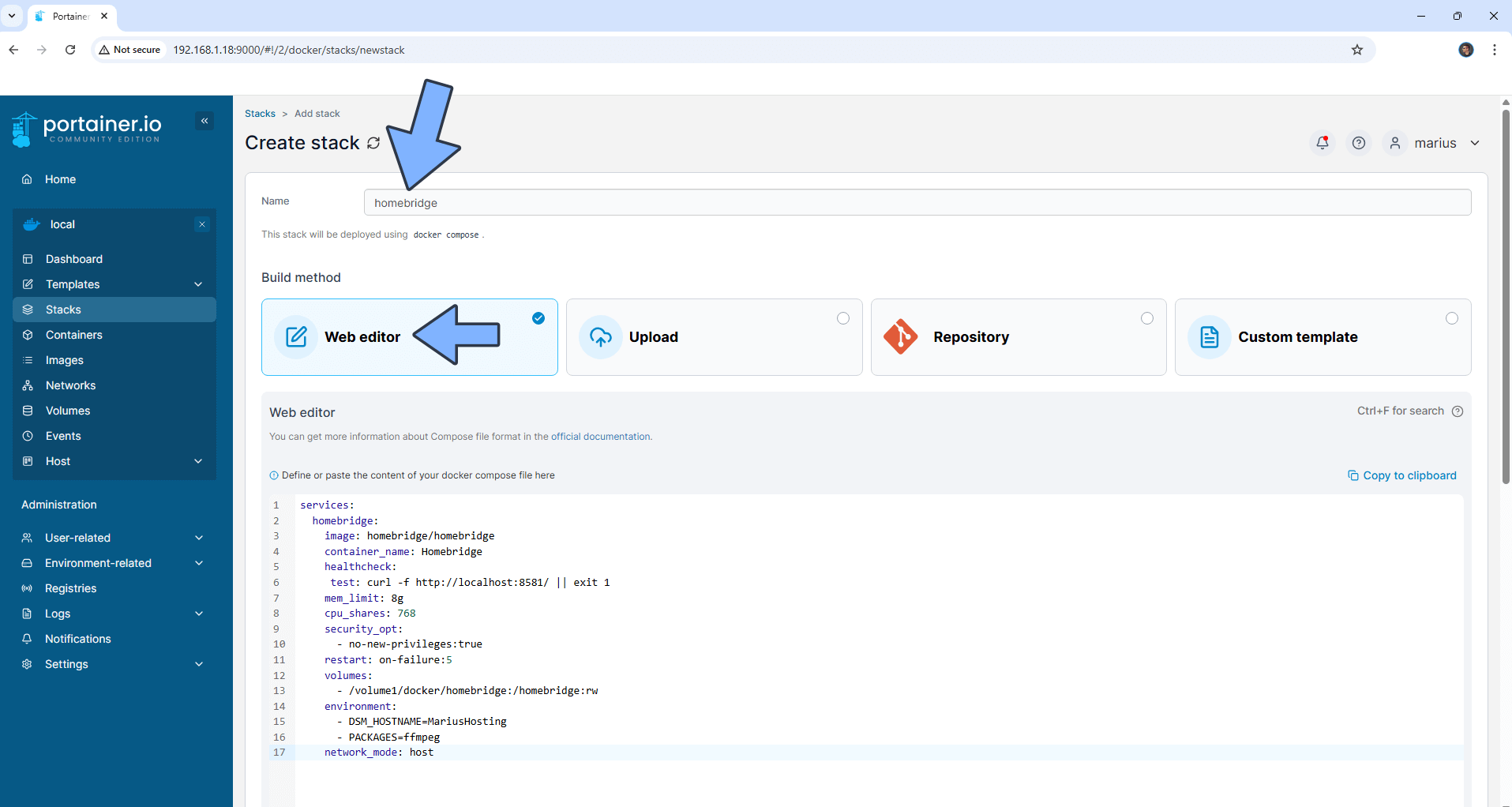
STEP 6
Scroll down on the page until you see a button named Deploy the stack. Click on it. Follow the instructions in the image below. The installation process can take up to a few minutes. It will depend on your Internet speed connection.
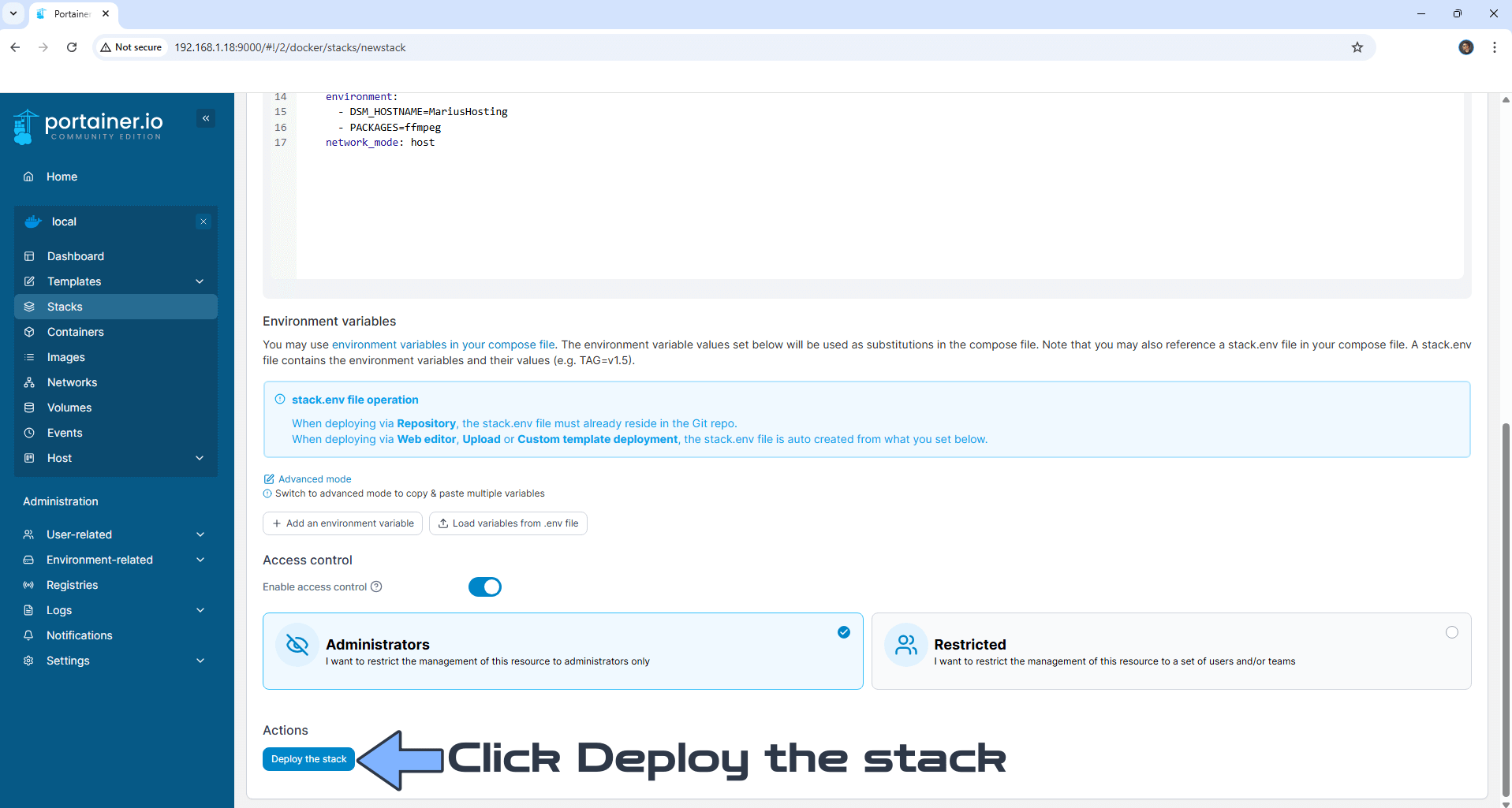
STEP 7
If everything goes right, you will see the following message at the top right of your screen: “Success Stack successfully deployed“.

STEP 8
🟢Please Support My work by Making a Donation. Almost 99,9% of the people that install something using my guides forget to support my work, or just ignore STEP 1. I’ve been very honest about this aspect of my work since the beginning: I don’t run any ADS, I don’t require subscriptions, paid or otherwise, I don’t collect IPs, emails, and I don’t have any referral links from Amazon or other merchants. I also don’t have any POP-UPs or COOKIES. I have repeatedly been told over the years how much I have contributed to the community. It’s something I love doing and have been honest about my passion since the beginning. But I also Need The Community to Support me Back to be able to continue doing this work.
STEP 9
The installation process can take up to a few seconds/minutes. It will depend on your Internet speed connection. Now open your browser and type in http://Synology-ip-address:8581 Click GET STARTED. Follow the instructions in the image below.
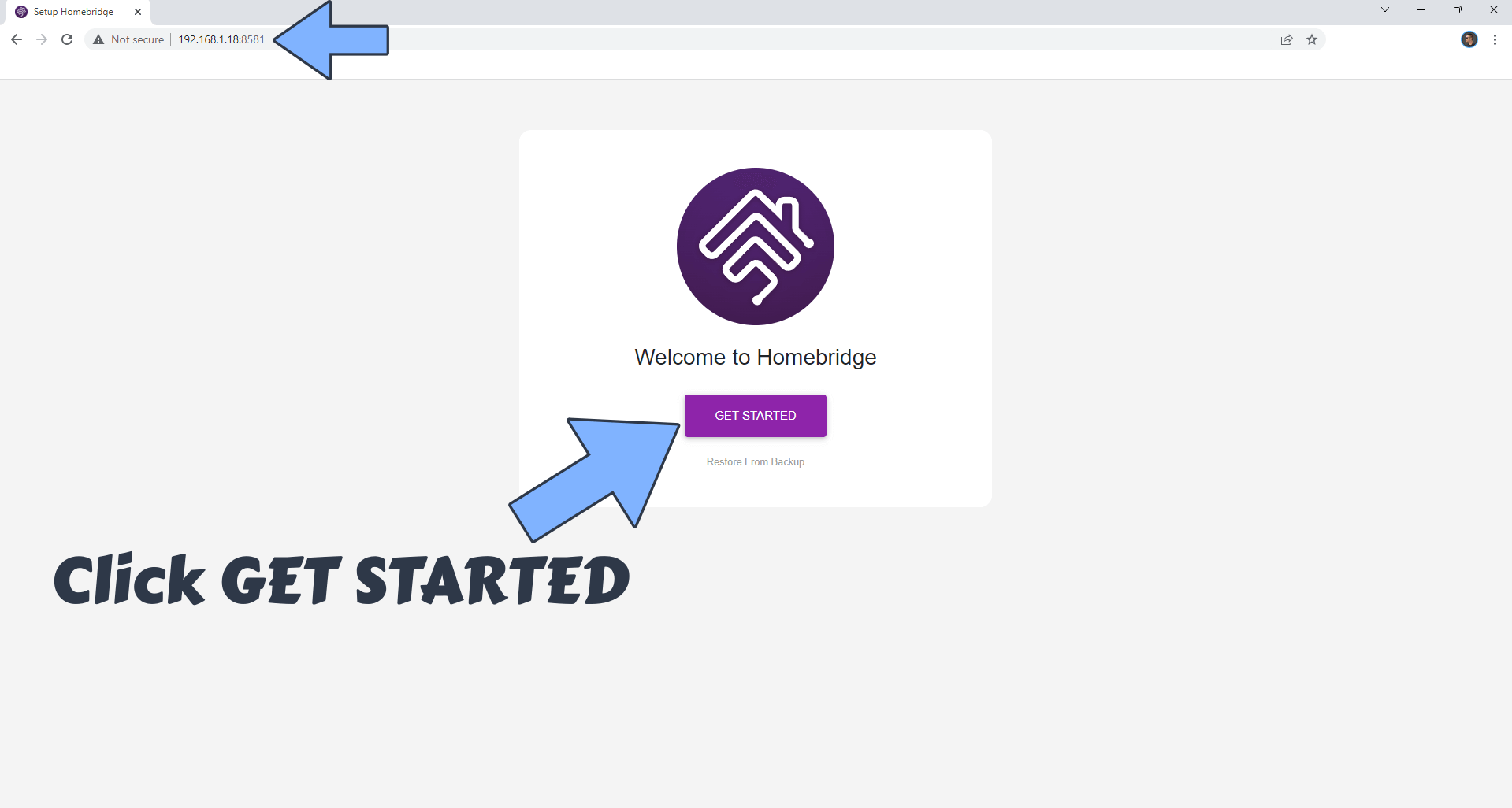
STEP 10
Type in your own credentials (Username and Password) then click CREATE ACCOUNT. Follow the instructions in the image below.
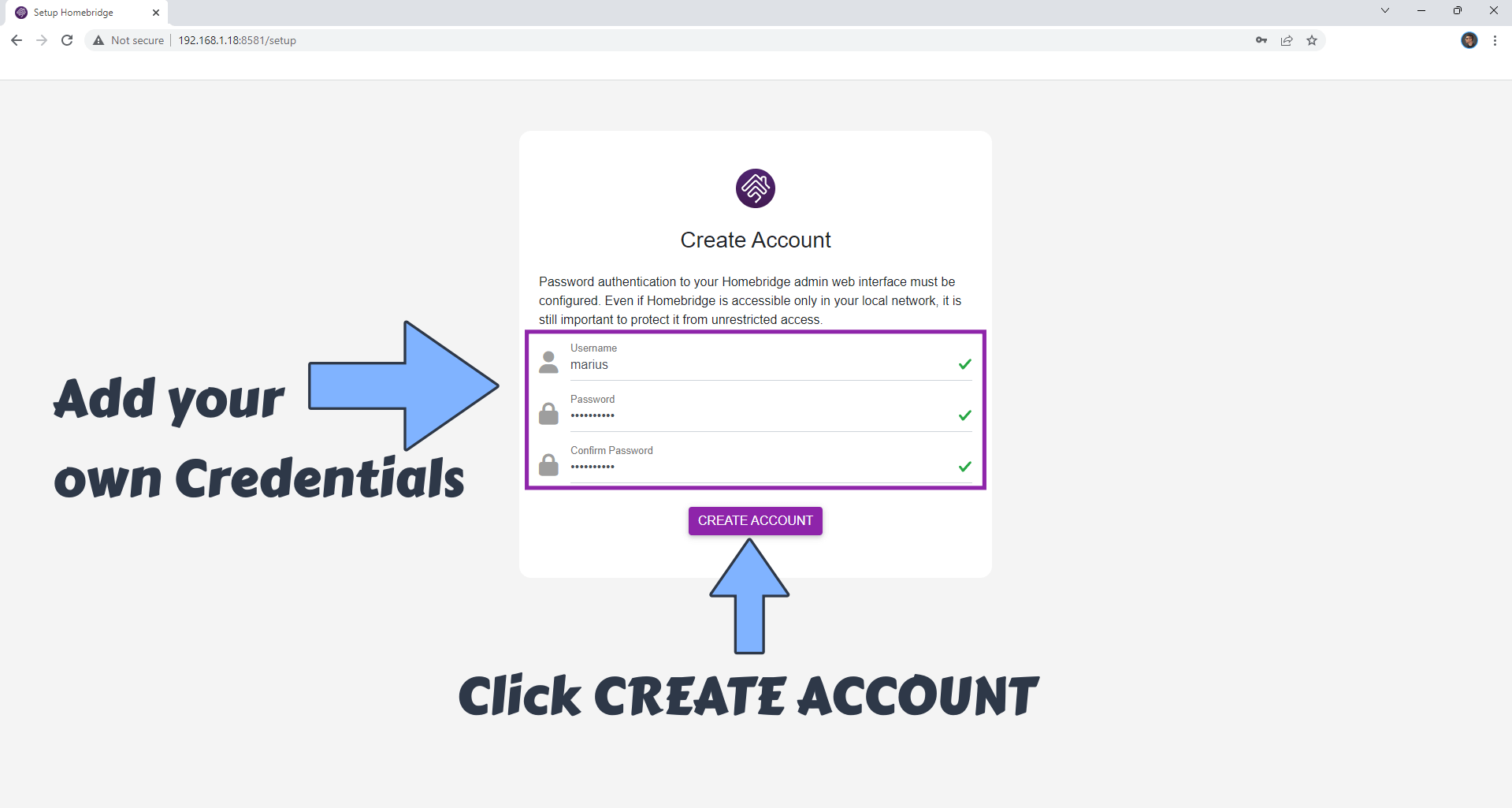
STEP 11
Click OPEN DASHBOARD. Follow the instructions in the image below.
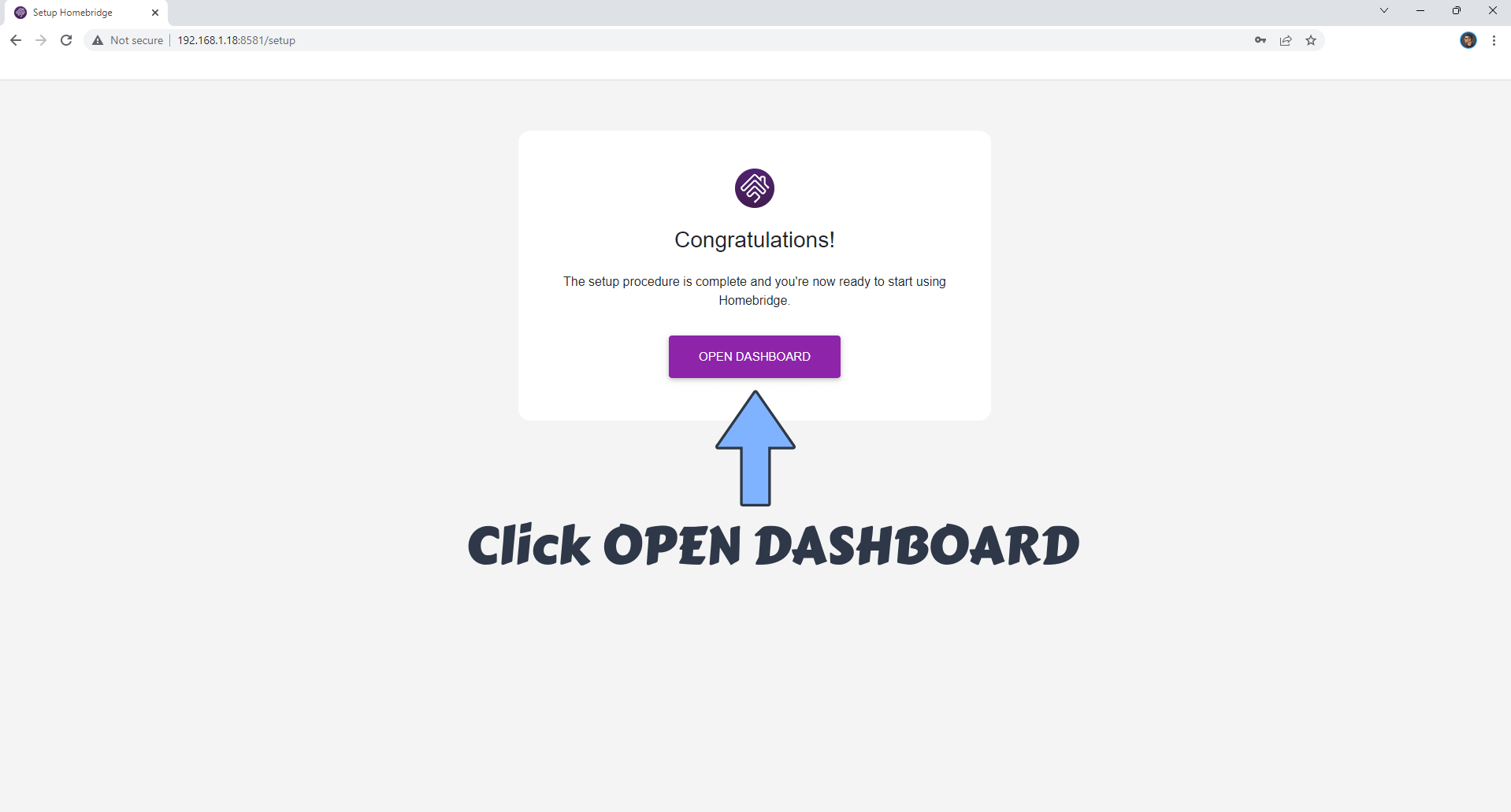
STEP 12
Your Homebridge dashboard at a glance! Enjoy HomeBridge and start adding Plugins.
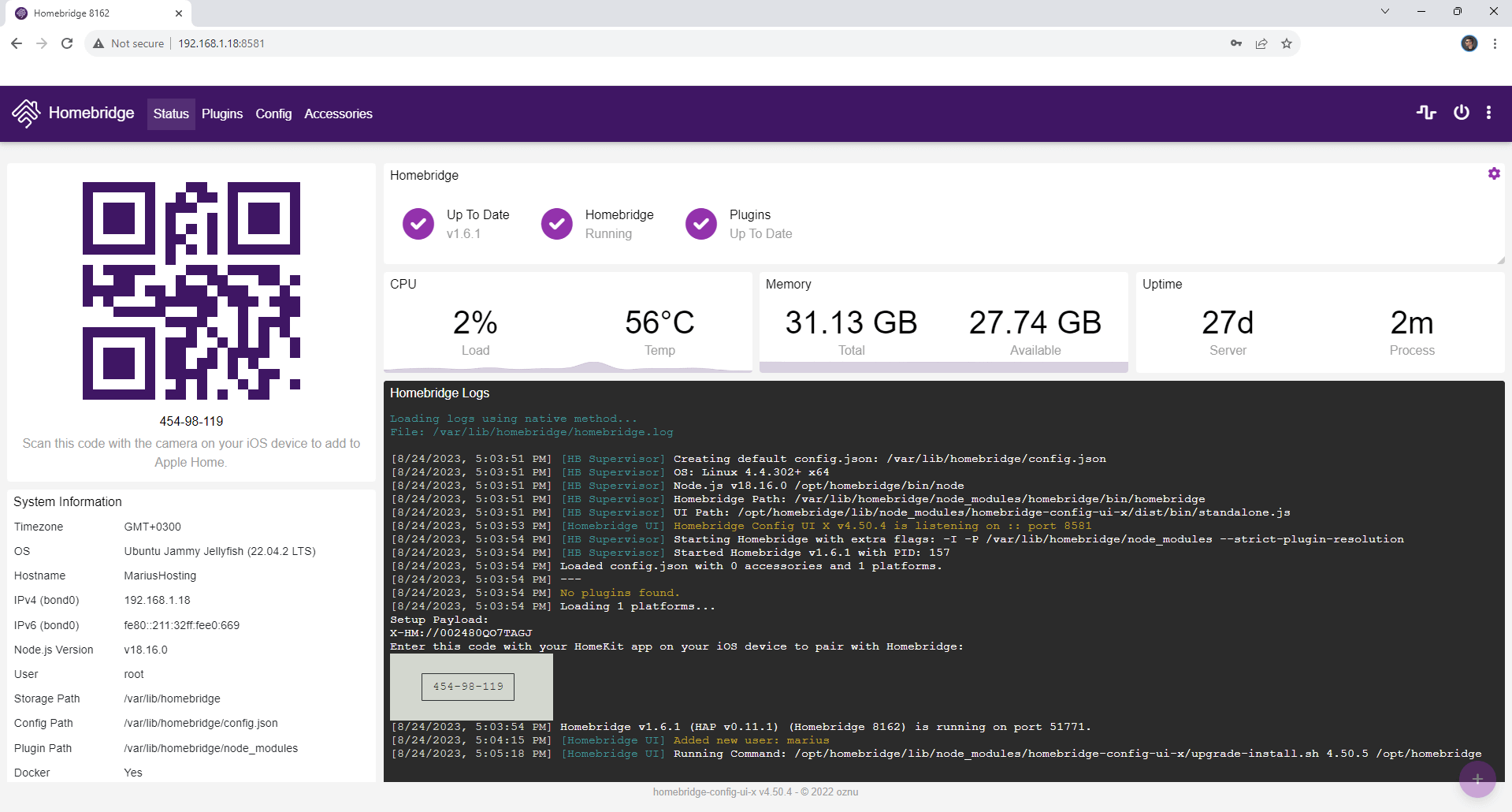
STEP 13
If you want to add FFmpeg, click the Plugins tab, then search for ffmpeg. Click the Install icon to Install Homebridge Camera Ffmpeg. Follow the instructions in the image below.
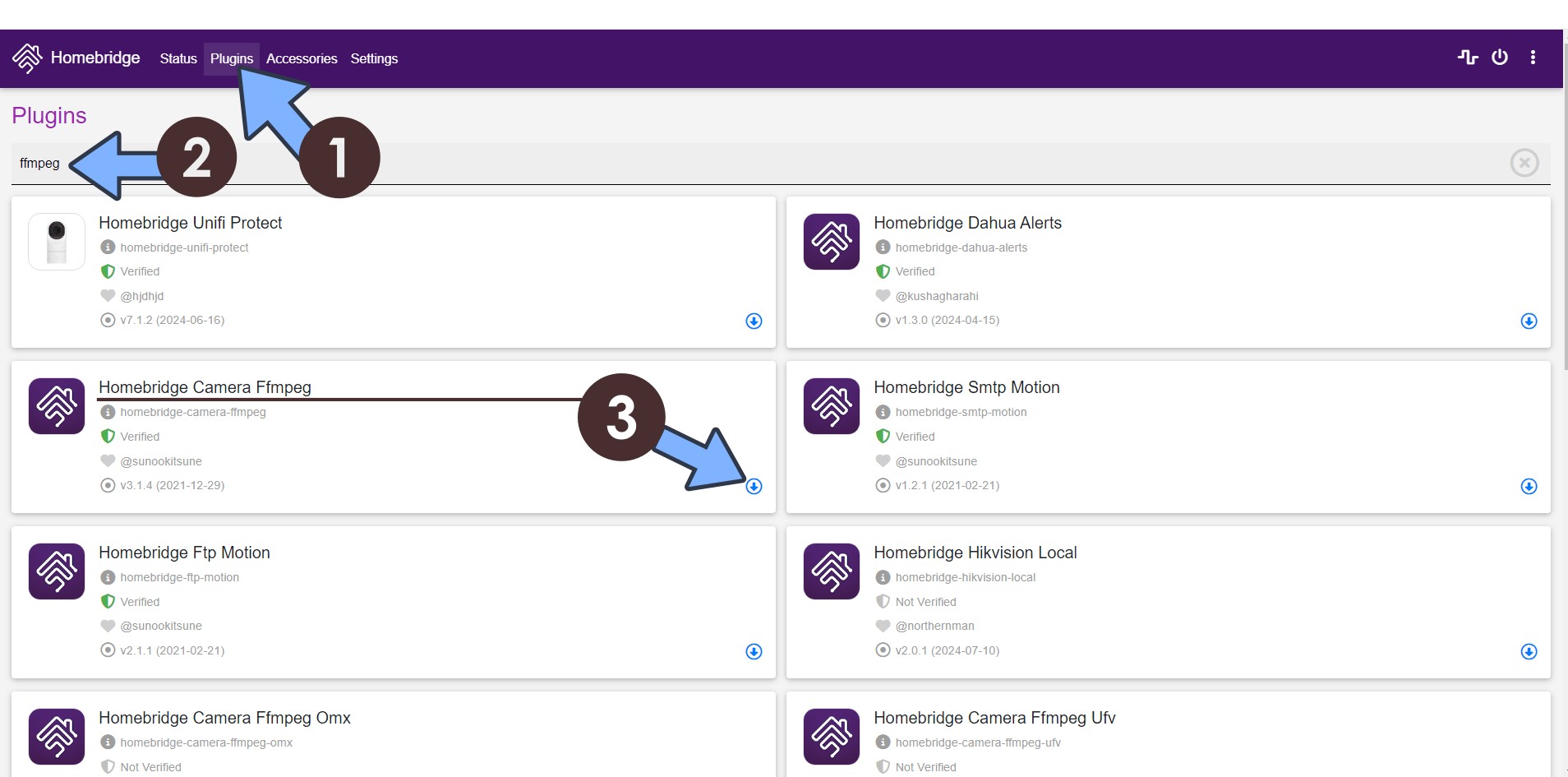
STEP 14
Select the latest version, then click INSTALL. Follow the instructions in the image below.
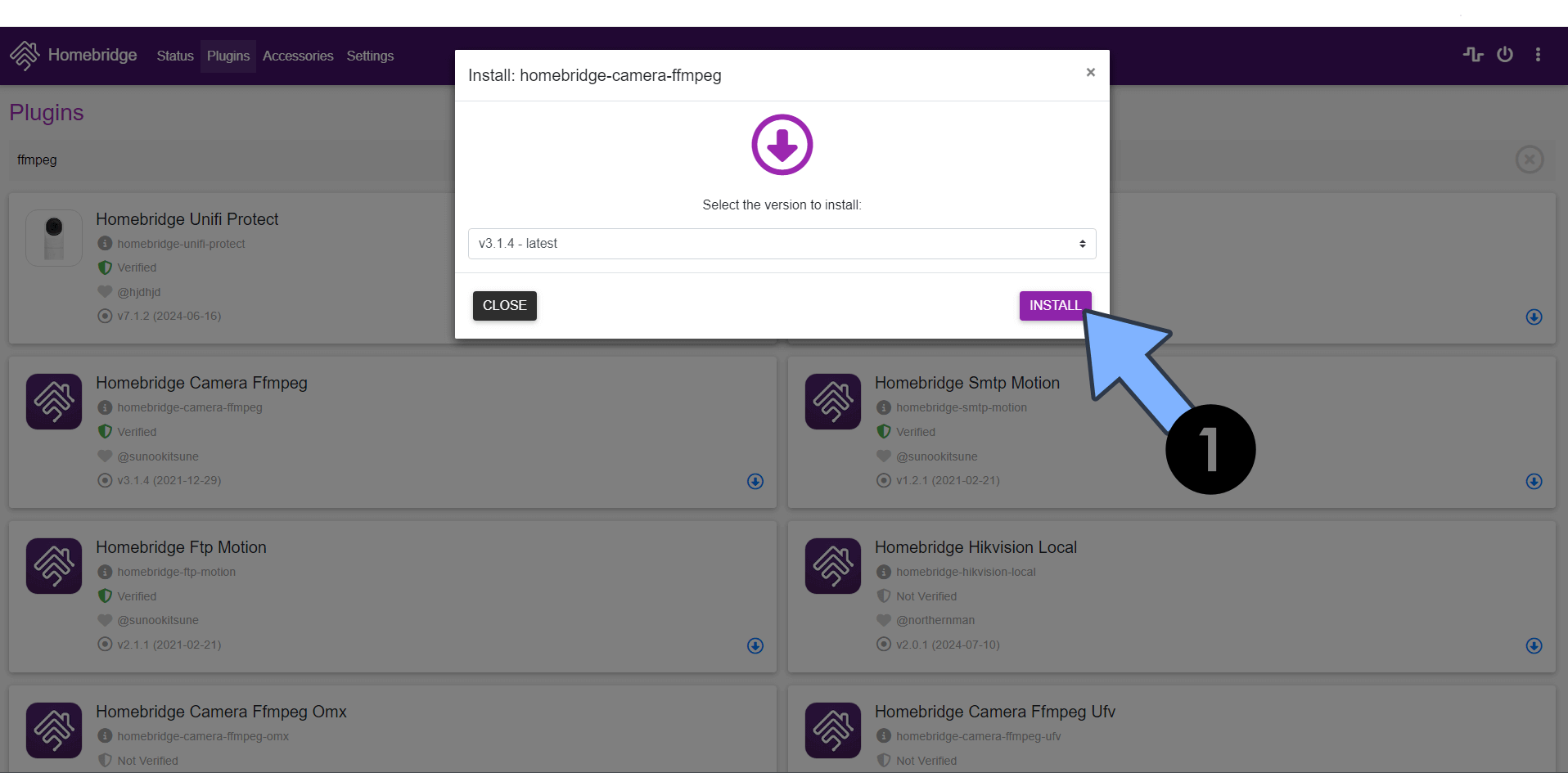
STEP 15
The plugin is now successfully installed. Follow the instructions in the image below.
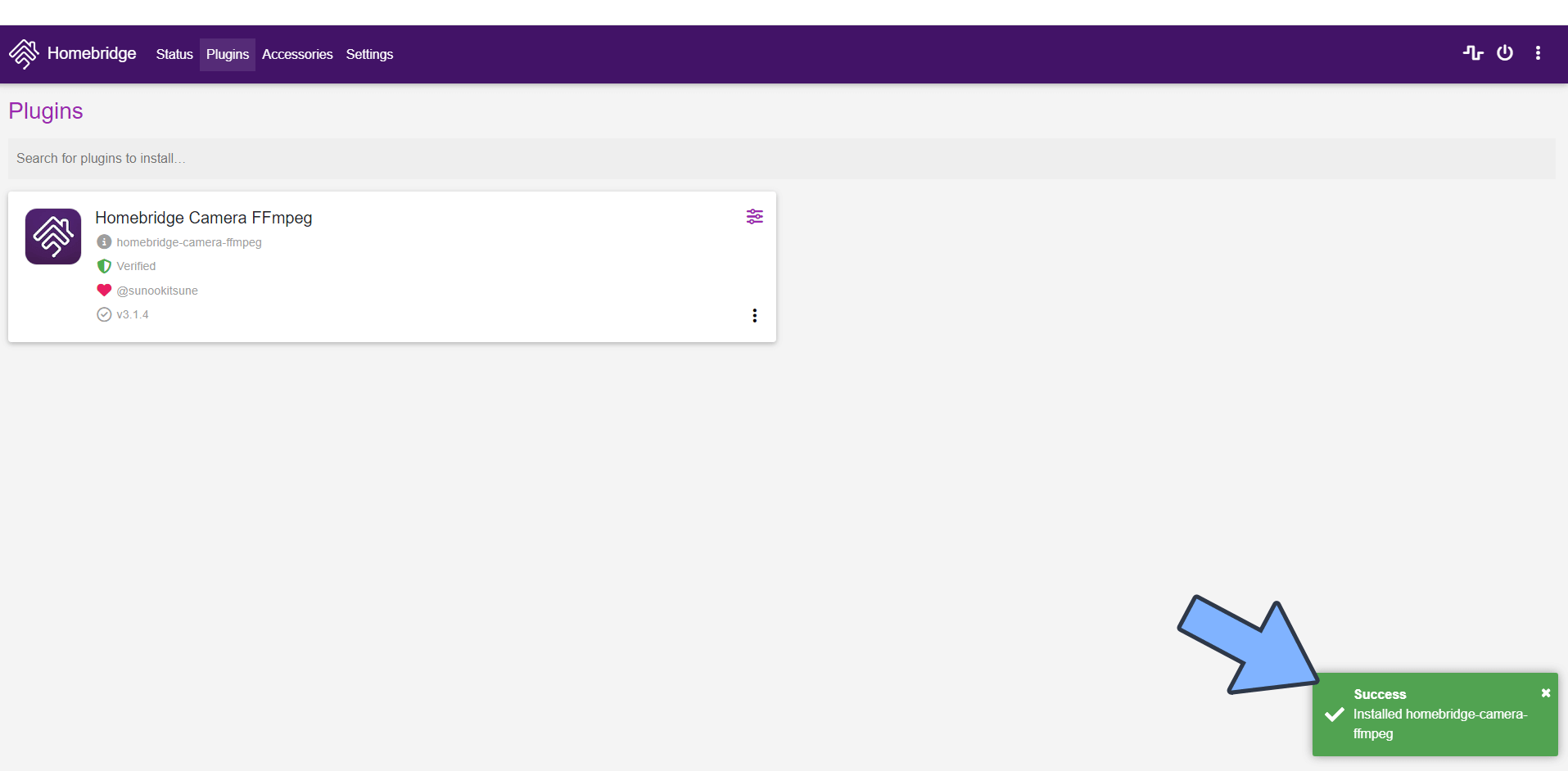
STEP 16
At the top right of the page, click on the 3 vertical lines then UI Settings icon. Select your favorite Homebridge theme, then click SAVE to save the settings. Follow the instructions in the image below.
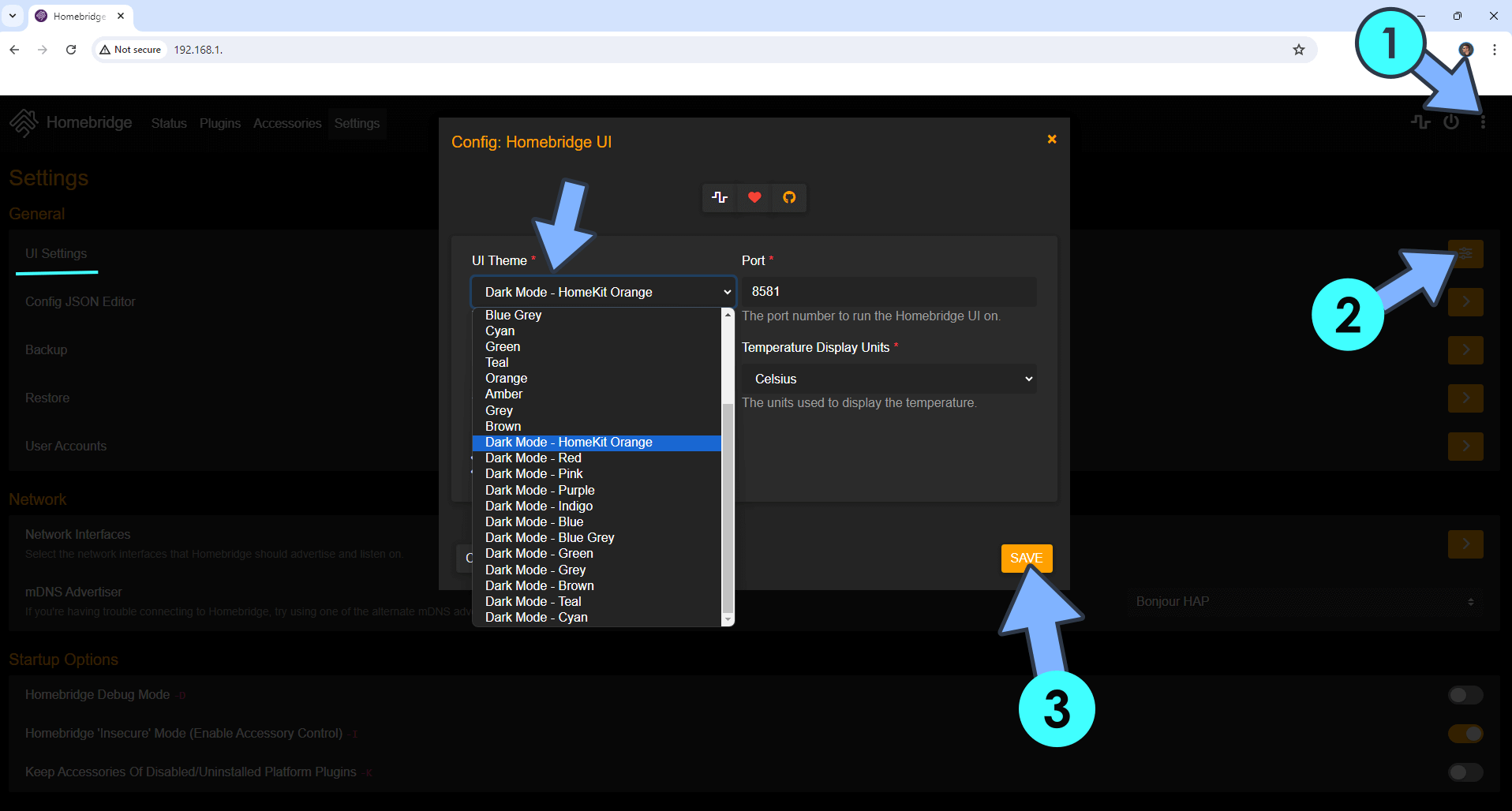
Enjoy Homebridge!
Note: If you want to run the Homebridge container over HTTPS, check How to Run Docker Containers Over HTTPS. In order to make Homebridge work via HTTPS, it’s mandatory to activate WebSocket.
Note: Can I run Docker on my Synology NAS? See the supported models.
Note: How to Back Up Docker Containers on your Synology NAS.
Note: Find out how to update the Homebridge container with the latest image.
Note: How to Add USB Support on DSM 7.2.
Note: How to Free Disk Space on Your NAS if You Run Docker.
Note: How to Schedule Start & Stop For Docker Containers.
Note: How to Activate Email Notifications.
Note: How to Add Access Control Profile on Your NAS.
Note: How to Change Docker Containers Restart Policy.
Note: How to Use Docker Containers With VPN.
Note: Convert Docker Run Into Docker Compose.
Note: How to Clean Docker.
Note: How to Clean Docker Automatically.
Note: Best Practices When Using Docker and DDNS.
Note: Some Docker Containers Need WebSocket.
Note: Find out the Best NAS Models For Docker.
Note: Activate Gmail SMTP For Docker Containers.
This post was updated on Saturday / December 6th, 2025 at 4:06 AM
